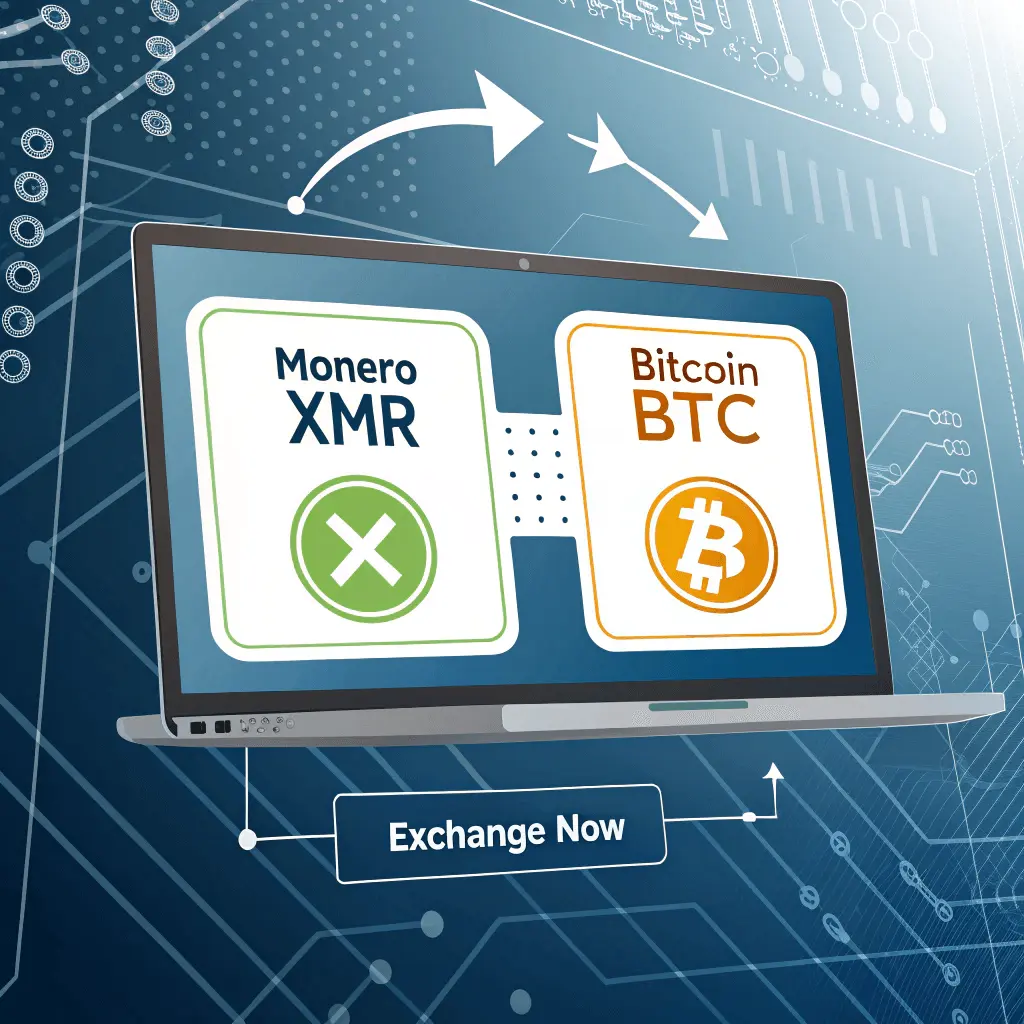
Monero (XMR) is one of the few truly anonymous cryptocurrencies. It is preferred by those who value privacy, secure transactions, and a decentralized structure. Thanks to RingCT technology and hidden addresses, Monero does not allow tracking the sender, recipient and amount of transfer.
However, due to its privacy and less liquidity than Bitcoin, the Monero cryptocurrency is not always convenient for everyday transactions. Many users prefer to exchange XMR for Bitcoin (BTC), the first and most widely accepted cryptocurrency. Especially when it comes to long-term storage, transferring to an exchange, or using bitcoin as a universal digital asset.
The best way to perform the conversion is to use electronic exchanges. Just visit BestChange aggregator to exchange XMR to BTC quickly and safely.
Why is it convenient and safe to exchange Monero to BTC via BestChange?
Many cryptocurrency exchanges restrict work with Monero due to regulatory requirements. On some of them, the crypto coin is not available for trading at all. In addition, when using centralized platforms, the user has to sacrifice anonymity, as they will have to undergo KYC, disclose data and use centralized wallets.
That is why exchanging via electronic exchangers remains the most reliable and efficient way to transfer XMR to BTC.
The advantages of such an exchange are represented by:
- complete anonymity – Monero retains its privacy even at the moment of exchange, while most exchangers do not require registration and documents;
- fast processing – exchange usually takes from 10 to 30 minutes;
- flexible choice – the user can choose the best rate, the right volume and the service with the right reserve;
- 24/7 availability – Bit Coin can be exchanged at any time, even at night or on weekends;
- safety – exchangers on BestChange are manually moderated, verified and have user ratings;
- direct transfer of Bitcoin cryptocurrency – the user receives bitcoins immediately to the wallet, without freezing and delays.
Such an approach is especially appreciated by users for whom privacy and control over funds come first.
How to exchange XMR to BTC via BestChange
For the exchange you will need an XMR wallet and the address for receiving BTC. You can use both desktop and mobile wallets. The exchange instructions are very simple:
- Go to the BestChange website.
- In the “Giving” column, choose Monero (XMR).
- In the “Receive” column, choose Bitcoin (BTC).
- Browse through the available offers of exchangers.
- Click on a suitable exchanger and go to its website.
- Specify the amount of XMR and the address of the BTC wallet to receive it.
- Send the specified amount of XMR to the proposed address.
- Receive confirmation (in the Monero network, usually one block is enough) and cryptocurrency.
Be sure to pay attention to the comments and requirements of the exchange service. Some may use an intermediate address or ask you to confirm the payment manually. It is required to verify the details before sending.
Monero to Bitcoin exchange is not a complicated operation if you use the right tools. The electronic exchangers available on BestChange allow you to do it quickly, anonymously and with minimal costs. Such qualities are especially important for those who work with sensitive assets but want to use the more liquid and globally recognized cryptocurrency, BTC.
Conclusion
In conclusion, exchanging Monero (XMR) to Bitcoin (BTC) offers a practical solution for users seeking to maintain privacy while benefiting from Bitcoin’s higher liquidity and widespread acceptance. Monero’s advanced privacy features make it ideal for secure and anonymous transactions, but its limited support on many platforms can create challenges for everyday use.
BestChange provides a reliable and efficient way to convert XMR to BTC through a network of verified electronic exchangers. This method preserves user anonymity, avoids lengthy verification processes, and ensures quick and safe transfers. With features like real-time rates, and round-the-clock availability, BestChange stands out as a preferred choice for privacy-focused users.



